Thingiverse

The 100 $ lab: Fluorescence microscope & behavioural tracker for optogenetics by BadenLab
by Thingiverse
Last crawled date: 3 years, 6 months ago
Note: Any tips will go straight to our charity "TReND in Africa" (www.trendinafrica.org) which is dedicated to fostering university level science education on the African continent!
// update April 2017 - the full design is now formally published on bioRxiv: http://biorxiv.org/content/early/2017/03/31/122812
// note update v29 in scad (5th Aug 2016), has lower tolerance for all slidy bits to work well on an ultimaker 2. also the size of the PCB slot has expanded to reflect the latest iteration of that. The STL arrangements are still from version 26.
The 100$ lab: A 3-D printable open source platform for fluorescence microscopy, optogenetics and accurate temperature control during behaviour of zebrafish, Drosophila and C. elegans.
in collaboration with Andre Maia Chagas (ID: iamchagas) Lucia L Prieto Godino (ID: lprietog) and A Arrenberg
Hack-a-day link: https://hackaday.io/project/5059-flypi
Link on my page, including a work-in-progress manuscript + manual:http://open-labware.net/projects/flypi/
We call it "FlyPi", as it is based on a Raspberry Pi, and was originally intended for work with Drosophila (fruit flies). However, also without flies it is a very useful tool, e.g. for science teaching.
A Raspberry Pi 2 with adjustable focus RPi Camera module serves as the basic imaging unit. A custom Arduino Nano / PCB breakout allows flexible attachment and software control of a range of sensors and actuators. By default, it controls a bunch of LEDs for lighting, fluorescence excitation and optogenetic stimulation as well as a Peltier element and thermistor for accurate temperature control. In addition, servo motors and other actuators can be attached. All mechanics are 3D printed. A custom Python3 GUI controls both the RPiCamera and all peripherals through the Arduino.
As can be seen in the preliminary figures included, the system resolves things down to the size of single red blood cells and gives fairly descent GFP-based fluorescence images. Optogenetic stimulation of ChRII and ReaChR works, and we are currently optimising out Peltier control system (it overheats too quickly).
Notably, the videos don't do it justice - youtube kills the high resolution, both temporal and spatial, and introduces unfortunate compression artifacts. Original videos taken are crisp 5MP at 15 Hz, and go up to 90 Hz at x4 binning.
We aim to formally publish this in a scientific outlet in the near future, together with adequate documentation to build your own. The system can be assembled from off-the-shelf components that total ~100 $ (hence 100$ lab...). All plans & code are fully open. For now, however it's very much a work in progress and we are still working out the kinks... but do watch this space!
Also, do check out our recent publication on 3D printing lab equipment. http://journals.plos.org/plosbiology/article?id=10.1371/journal.pbio.1002086
Finally, do check out our Science & Africa NGO:
http://trendinafrica.org/
Here, amongst other things, we aim to implement these types of designs in science education and research on the African continent.
Andre's Site: http://openeuroscience.com/
Some videos:
Overview: http://youtu.be/T9DAaXVszYQ
Motorised focus: http://youtu.be/nKvuao8ENtA
// update April 2017 - the full design is now formally published on bioRxiv: http://biorxiv.org/content/early/2017/03/31/122812
// note update v29 in scad (5th Aug 2016), has lower tolerance for all slidy bits to work well on an ultimaker 2. also the size of the PCB slot has expanded to reflect the latest iteration of that. The STL arrangements are still from version 26.
The 100$ lab: A 3-D printable open source platform for fluorescence microscopy, optogenetics and accurate temperature control during behaviour of zebrafish, Drosophila and C. elegans.
in collaboration with Andre Maia Chagas (ID: iamchagas) Lucia L Prieto Godino (ID: lprietog) and A Arrenberg
Hack-a-day link: https://hackaday.io/project/5059-flypi
Link on my page, including a work-in-progress manuscript + manual:http://open-labware.net/projects/flypi/
We call it "FlyPi", as it is based on a Raspberry Pi, and was originally intended for work with Drosophila (fruit flies). However, also without flies it is a very useful tool, e.g. for science teaching.
A Raspberry Pi 2 with adjustable focus RPi Camera module serves as the basic imaging unit. A custom Arduino Nano / PCB breakout allows flexible attachment and software control of a range of sensors and actuators. By default, it controls a bunch of LEDs for lighting, fluorescence excitation and optogenetic stimulation as well as a Peltier element and thermistor for accurate temperature control. In addition, servo motors and other actuators can be attached. All mechanics are 3D printed. A custom Python3 GUI controls both the RPiCamera and all peripherals through the Arduino.
As can be seen in the preliminary figures included, the system resolves things down to the size of single red blood cells and gives fairly descent GFP-based fluorescence images. Optogenetic stimulation of ChRII and ReaChR works, and we are currently optimising out Peltier control system (it overheats too quickly).
Notably, the videos don't do it justice - youtube kills the high resolution, both temporal and spatial, and introduces unfortunate compression artifacts. Original videos taken are crisp 5MP at 15 Hz, and go up to 90 Hz at x4 binning.
We aim to formally publish this in a scientific outlet in the near future, together with adequate documentation to build your own. The system can be assembled from off-the-shelf components that total ~100 $ (hence 100$ lab...). All plans & code are fully open. For now, however it's very much a work in progress and we are still working out the kinks... but do watch this space!
Also, do check out our recent publication on 3D printing lab equipment. http://journals.plos.org/plosbiology/article?id=10.1371/journal.pbio.1002086
Finally, do check out our Science & Africa NGO:
http://trendinafrica.org/
Here, amongst other things, we aim to implement these types of designs in science education and research on the African continent.
Andre's Site: http://openeuroscience.com/
Some videos:
Overview: http://youtu.be/T9DAaXVszYQ
Motorised focus: http://youtu.be/nKvuao8ENtA
Similar models
thingiverse
free

Rack for Biropettes, Customizable by BadenLab
...http://open-labware.net
/////////////////////////////////////////////////////////////////////////////////////////////////////////
thingiverse
free

Drosophila icon by VidalGadeaLab
...ila icon by vidalgadealab
thingiverse
this is a drosophila model that you can attach to your fly creations.
share freely,
andres
thingiverse
free

String gun
...ocess & working video
here : https://youtu.be/t4rtaakx8zq
designed by earn design lab
what we do : http://earndesignlab.com/
thingiverse
free
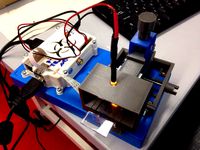
RPi-microscope for histology with focus-drive and XY stage by BadenLab
...lab.equipment tinkering page: http://open-labware.net ///////////////////////////////////////////////////////////////////////////////////////////////////////// the idea is pretty similar to my "phone-scope (http://www.thingiverse.com/thing:280004)" - but image quality is...
thingiverse
free

FlyPiScope by BadenLab
...hat some of the electronics on the back of the flypi are not used in this mod (this just happened to be the pcb we had around...)
thingiverse
free

Drosophila etherizer by gnadori
...the top part on the bottom. put the vial containing drosophila on top, the etherized flies can be connected from the bottom part.
thingiverse
free

Low cost Linear actuator for CNC Machines and alike! by lukask
...: http://www.instructables.com/id/low-cost-linear-actuator/
check out the video at: https://www.youtube.com/watch?v=wontvwhlhqi
thingiverse
free

Cover for odour cartridges for behavioural experiments by BentonLab
...y bentonlab
thingiverse
to cover vials to be used for fly behaviour so that the content of the vials is not visible to the flies
3dwarehouse
free

Standard Bank
...rican continent, standard bank group operations span to 13 countries, with an emerging market focus. #standard_bank #stellenbosch
thingiverse
free
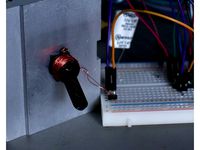
DIY Robotic Actuator by seanhodgins
...agnetic winding. works surprisingly well and can be made incredibly small.
check out the video here!https://youtu.be/unvmefpd-hg
Optogenetics
thingiverse
free

Spacer for fly behavioural chambers by BentonLab
... for recording from the top while illuminating the bottom for optogenetic experiments (see diagram). used in prieto-godino et al.
thingiverse
free

Openspritzer by BadenLab
...formance and low cost openspritzer will be of interest to a broad range of researchers working in the life and physical sciences.
Badenlab
thingiverse
free

Boss clamp by BadenLab
...boss clamp by badenlab
thingiverse
adapter to mount a boss clamp onto a thorlabs construction rail.
by chris forman
thingiverse
free

Power dock support by BadenLab
...power dock support by badenlab
thingiverse
for fixing usb plug in place..
by chris forman
thingiverse
free

Objective stand for Sutter MOM Objective holder by BadenLab
...objective stand for sutter mom objective holder by badenlab
thingiverse
by chris forman
thingiverse
free
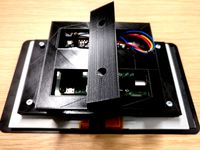
Angled rig-mount for RPi 7"screen by BadenLab
...angled rig-mount for rpi 7"screen by badenlab
thingiverse
by maxime zimmermann
thingiverse
free

Microscope Chamber mount by BadenLab
...dapter to fix heated chamber assembly (biochrom ltd, uk) onto standard thorlabs bracket. uses m6 screws + washer.
by chris forman
thingiverse
free

Bracket for Thorlabs construction rails by BadenLab
...connect thorlabs 25 mm constructino rails. it's the tiny grey thing in the middle of the image on the inside of the left cage
thingiverse
free

Calibration inset for Sutter MOM 2p scope Objective mount by BadenLab
...calibration inset for sutter mom 2p scope objective mount by badenlab
thingiverse
by chris forman
thingiverse
free

Optical cage mount (30 mm) for 1" lens (Thorlabs) by BadenLab
...optical cage mount (30 mm) for 1" lens (thorlabs) by badenlab
thingiverse
by maxime zimmermann
thingiverse
free

FlyPiScope by BadenLab
...hat some of the electronics on the back of the flypi are not used in this mod (this just happened to be the pcb we had around...)
thingiverse
free

CCD Camera mounting adapter by BadenLab
...ics
by chris forman, inspired by the university of tübingen eye clinic' workshop together with the eulerlab (www.eulerlab.de)
Behavioural
3d_ocean
$89

Raptor dinosaur robot
... and animator friendly controls. spline ik back, neck and tail with scripted twist behaviour. file comes with animation – gene...
creative_market
$59

Falls Behaviour
... animation mocap biped character fbx bip bvh max
33 motions provided in : .bip (3dsmax 2015) .fbx (fbx 2012) + tpose .bvh + tpose
thingiverse
free

Cover for odour cartridges for behavioural experiments by BentonLab
...y bentonlab
thingiverse
to cover vials to be used for fly behaviour so that the content of the vials is not visible to the flies
thingiverse
free

Spacer for fly behavioural chambers by BentonLab
... for recording from the top while illuminating the bottom for optogenetic experiments (see diagram). used in prieto-godino et al.
thingiverse
free

lever for skinner box by iamchagas
...a lever design for skinner boxes used for rodent behavioural ...
thingiverse
free

Concentric circle test by ttsalo
...giverse
test piece with 0.5mm thick circular base and 0.5mm thick 1mm wide circles with 1mm gaps. for testing printer behaviour.
thingiverse
free

Flashforge Dreamer front dual fan conduct with 3mm leds lights by egman17
...prove the part with a reinforcement of behaviour on the top and to add leds of 3mm to light the first layers, the whole fed in 5v
thingiverse
free

Door stopper/lock wall mounted by daMaker
...y be connected to mystic oil and gravitational problems.
i designed a part to stop this natural behaviour of this special door.
thingiverse
free

Apex DJI Camera Holder by LordGG
...ving side plates might generate a whistling noise (no effect on quad's behaviour)
impulserc sells dji compatible side plates.
Tracker
3d_export
$89

Lowpoly Grumman S-2 Tracker 3D Model
...hter jet s2
lowpoly grumman s-2 tracker 3d model download .c4d .max .obj .fbx .ma .lwo .3ds .3dm .stl bebasline3d 102939 3dexport
3d_ocean
$5

Football Ball
...blender 3d. exported to different formats: .obj;.3ds;.blend;.dae;.fbx;.ply;.x3d;.mtl . visit tracker ...
3d_export
$65
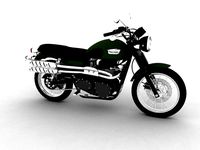
Triumph Scrambler 900 2012 3D Model
...2012 3d model 3dexport off road dirt flat street tracker racing racer enduro cross adventure motogp engine bike british...
cg_studio
$49

Sony Smart Band SWR10 Purple3d model
...smart band swr10 purple3d model cgstudio fitness band fitness tracker mobile accessories pedometer smartband sony smart swr10 .max .obj...
cg_studio
$49
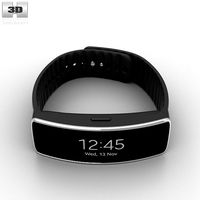
Samsung Gear Fit Black3d model
...samsung gear fit black3d model cgstudio fitness band fitness tracker mobile accessories pedometer samsung gear fit sm-r350 smartwatch watch...
cg_studio
$49

Sony Smart Band SWR10 White3d model
...smart band swr10 white3d model cgstudio fitness band fitness tracker mobile accessories pedometer smartband sony smart swr10 .max .obj...
cg_studio
$49
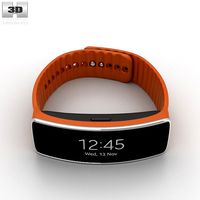
Samsung Gear Fit Orange3d model
...samsung gear fit orange3d model cgstudio fitness band fitness tracker mobile accessories pedometer samsung gear fit sm-r350 smartwatch .max...
cg_studio
$49
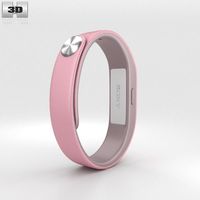
Sony Smart Band SWR10 Pink3d model
...smart band swr10 pink3d model cgstudio fitness band fitness tracker mobile accessories pedometer smartband sony smart swr10 .max .obj...
cg_studio
$49

Sony Smart Band SWR10 Black3d model
...smart band swr10 black3d model cgstudio fitness band fitness tracker mobile accessories pedometer smartband sony smart swr10 .max .obj...
cg_studio
$49
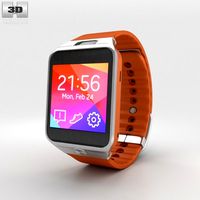
Samsung Galaxy Gear 2 Orange3d model
...samsung galaxy gear 2 orange3d model cgstudio fitness tracker mobile accessories pedometer samsung galaxy gear 2 sm-r380 smartwatch...
Fluorescence
3d_ocean
$6
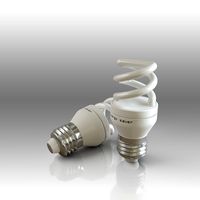
Energy Bulb Fluorescent
...energy bulb fluorescent
3docean
bulb eco ecological energy bulb fluorescent lamp light lighting
energy bulb fluorescent.
3d_export
$5

Fluorescent 3D Model
...fluorescent 3d model
3dexport
florasan light lamb fluorescent bulb white high poly
fluorescent 3d model husky 49990 3dexport
3d_export
$5

Fluorescent lamp 3D Model
...fluorescent lamp 3d model
3dexport
fluorescent lamp 3d model kevin 54162 3dexport
3d_ocean
$7

Photorealistic Fluorescent Bulb
...h of just 2050 polygons. it can be subdivided as needed for best results/performance. - preview images rendered with mental ray -
3d_export
$50

Fluorescent light 3D Model
...nt light umbrella lamp photo photography set studio fashon bulb lightstand adapter
fluorescent light 3d model braz 23175 3dexport
3d_export
$15

Fluorescent Fixture 3D Model
...3d model 3dexport lighting fixture t8 fluorescent tube lamp fluorescence bulb electrical electric energy saving stick incandescent illuminate electronic...
3d_export
$12
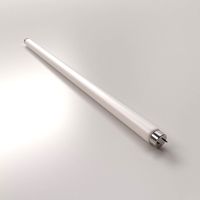
Fluorescent Tube 3D Model
...3d model 3dexport lighting fixture t8 fluorescent tube lamp fluorescence bulb electrical electric energy saving neon stick incandescent illuminate...
cg_studio
$22

FLUORESCENT LIGHTS Collection3d model
...economy
.max .fbx .obj - fluorescent lights collection 3d model, royalty free license available, instant download after purchase.
3d_export
$40
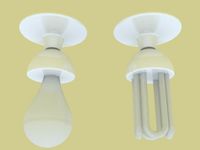
Fluorescent bulb light 3D Model
...lb light lamp fluorescent electricity incandescent illuminate lighting
fluorescent bulb light 3d model architect3d 33977 3dexport
cg_studio
$33

Compact Fluorescent Bulb3d model
...uminous
.3ds .max .obj .wrl - compact fluorescent bulb 3d model, royalty free license available, instant download after purchase.
Microscope
archibase_planet
free

Microscope
...roscope
archibase planet
microscope optical microscope
microscope n180314 - 3d model (*.gsm+*.3ds) for interior 3d visualization.
archibase_planet
free
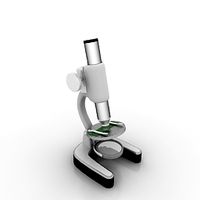
Microscope
...microscope
archibase planet
microscope medical facilities
microscope - 3d model for interior 3d visualization.
archibase_planet
free

Microscope
...microscope
archibase planet
microscope
microscope n031107 - 3d model (*.gsm+*.3ds) for interior 3d visualization.
archibase_planet
free
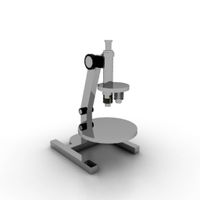
Microscope
...microscope
archibase planet
microscope laboratory equipment
microscope - 3d model (*.gsm+*.3ds) for interior 3d visualization.
archibase_planet
free
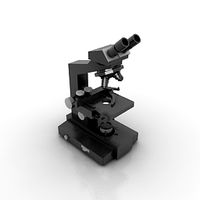
Microscope
...planet
microscope medical apparatus medical facilities
microscope n180608 - 3d model (*.gsm+*.3ds) for interior 3d visualization.
3d_ocean
$16
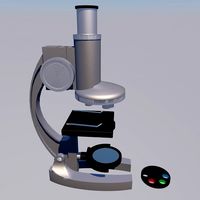
Microscop Toy
...microscop toy
3docean
game games microscop microscop toy play science toy
microscop model toy with materials
3d_ocean
$22
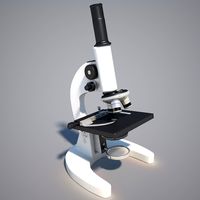
Microscope
...cope 3d model. created with 3dsmax 2011. preview rendered with 3dsmax 2011 and vray. max files can be opened with 3dsmax 2011-up.
archive3d
free

Microscope 3D Model
...e optical microscope
microscope n180314 - 3d model (*.gsm+*.3ds) for interior 3d visualization.
3d_export
$5

Microscope 3D Model
...microscope 3d model
3dexport
microscope
microscope 3d model tu.rok 77960 3dexport
3d_export
$36

Microscope 3D Model
...microscope 3d model
3dexport
microscope lab
microscope 3d model aardvark3d 5339 3dexport
Lab
3ddd
$1

Lab
...lab
3ddd
hkliving , lab
lab 13x13x17cm,
lab xl 36x36x32cm
3ddd
$1

Смеситель Lab
...смеситель lab
3ddd
barazza , lab
кухонный смеситель barazza;
модель lab.
3ddd
$1
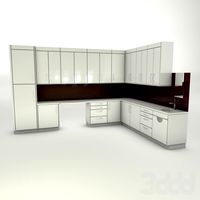
Lab Line
...lab line
3ddd
3ddd
$1
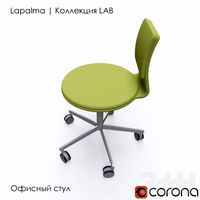
Lapalma - LAB
... стул
lapalma | коллекция lab
офисный стул
присутствует файл для cinema 4d с настроенными материалами для corona render.
3d_ocean
$6
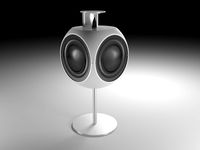
Beo Lab 3 Speaker
...beo lab 3 speaker
3docean
bang & olufsen beo lab 3 shelf speaker
beo lab 3 speaker.
cg_studio
$30
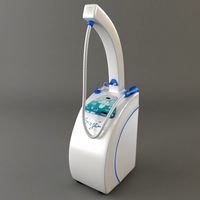
Lab Equipment3d model
...oratory scientific
.3ds .obj .max .fbx - lab equipment 3d model, royalty free license available, instant download after purchase.
3ddd
free
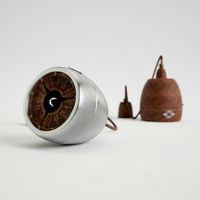
Zero pendant Oxidation Lab
... oxidation
oxidation lab zero pendant размер 110х140 длинна кабеля 1м
в архиве сцена для 2013 макса
3ddd
$1
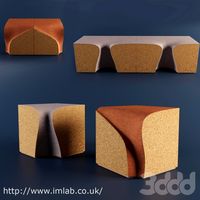
Eroded Stools by I M Lab
... англия , пробка
банкетки i m lab, текстуры прилагаются
3d_export
$45
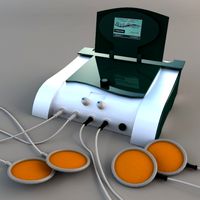
Lab Equipment 3D Model
...x vray realistic detailed lab laboratory scientific textures materials low poly
lab equipment 3d model 3dfurniture 35673 3dexport
3d_export
$39

Lab Equipment 3D Model
...x vray realistic detailed lab laboratory scientific textures materials low poly
lab equipment 3d model 3dfurniture 35678 3dexport
100
3ddd
$1
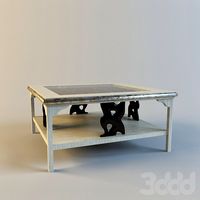
Life 100-100-48
...life 100-100-48
3ddd
life , журнальный
автор модели: aeroslon
3ddd
$1

100 Dollars
...100 dollars
3ddd
100 dollars текстуры в комплекте :-)
3ddd
free

Alexandria 100
...alexandria 100
3ddd
alexandria
мебель для ванной alexandria 100
design_connected
$4

100% Design
...100% design
designconnected
ligne roset 100% design writing desks computer generated 3d model. designed by jeffrey bernett.
3ddd
free
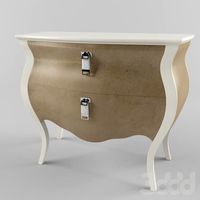
Fendi Canova 100
...fendi canova 100
3ddd
тумба , fendi
fendi canova 100
3ddd
$1
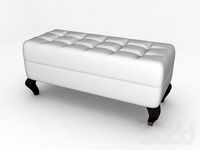
Банкетка Монтсеррат 100
..., капитоне , монтсеррат
банкетка монтсеррат 100
3ddd
$1
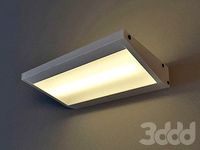
Brilux Aves 100
...brilux aves 100
3ddd
бра. brilux aves 100. польша. материалы настроены.
3ddd
$1
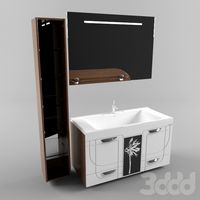
акватон / премьер 100
...акватон / премьер 100
3ddd
акватон
раковина акватон премьер 100, сделано по размерам
3ddd
$1

Hansgrohe Croma 100
...ma 100
3ddd
hansgrohe , душ
душевая панель hansgrohe croma 100. производство - германия.
design_connected
$11

Les Ombrelles 100
...les ombrelles 100
designconnected
la corbeille editions les ombrelles 100 computer generated 3d model.
